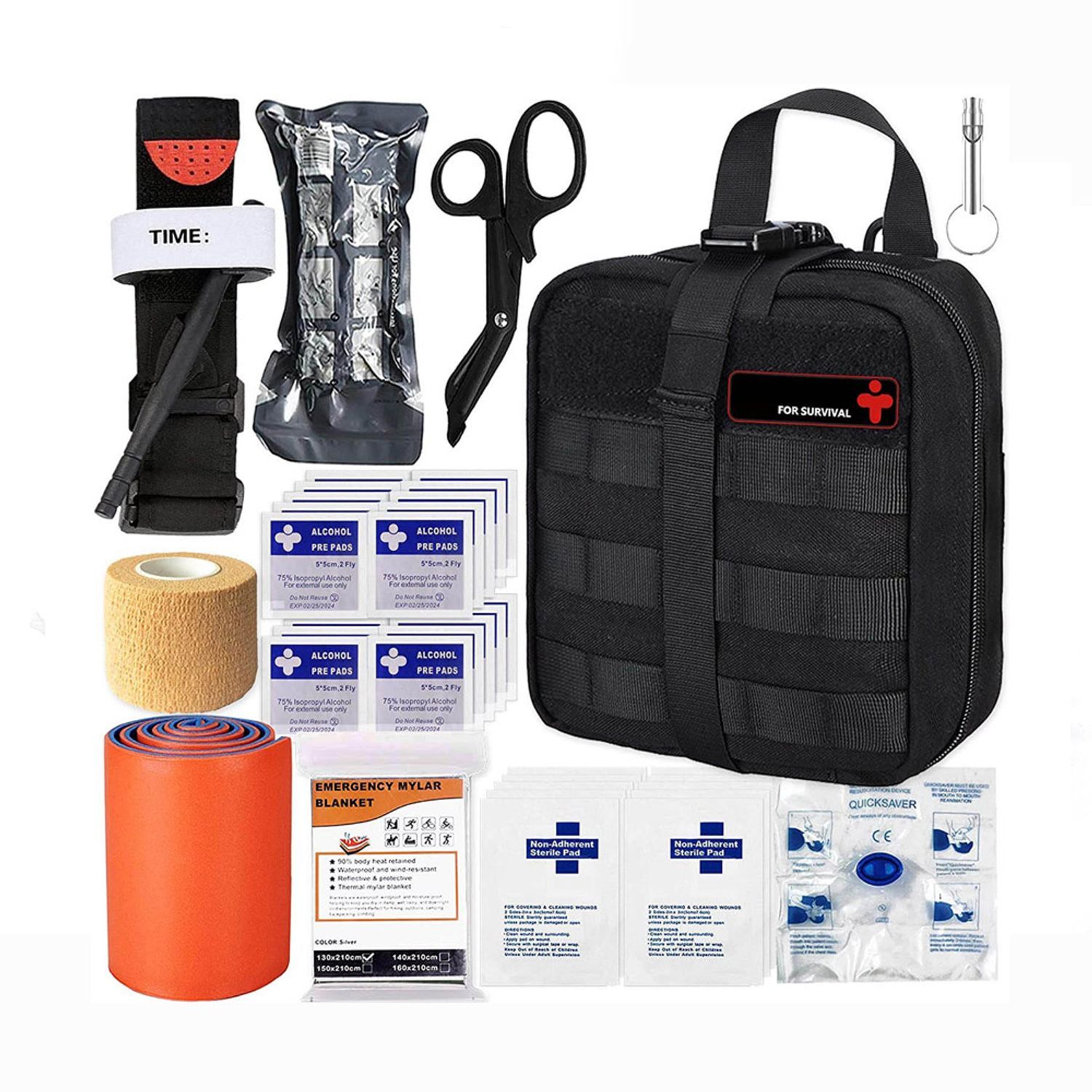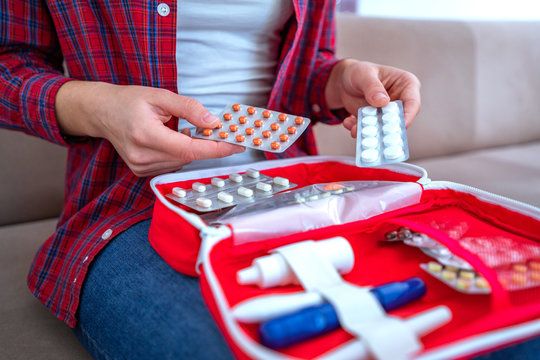
GET A QUOTE
How to Use Your First Aid Kit
A first aid kit is a crucial tool for any household, workplace, or vehicle. In an emergency, the ability to quickly and efficiently use your first aid kit can make a significant difference in the outcome of a situation. Whether it's treating minor injuries or providing essential care before professional help arrives, knowing how to use your first aid kit properly is a skill that everyone should have. In this blog, we’ll guide you through the essential steps to use your first aid kit effectively, so you’re prepared for any situation.
What is a First Aid Kit?
A first aid kit is a collection of medical supplies used to treat minor injuries and medical emergencies. It usually contains items like bandages, gauze, antiseptics, pain relievers, and basic medical instruments. Having a well-stocked first aid kit at your disposal can be the difference between a quick recovery and a trip to the emergency room.
Why Do You Need a First Aid Kit?
Accidents happen when we least expect them. Whether at home, in your car, or at work, a first aid kit can help provide immediate relief in the event of an accident. It allows you to treat common injuries such as cuts, burns, scrapes, or even sprains. Plus, having a first aid kit can save precious time before you’re able to access professional medical assistance.
What Should Be in Your First Aid Kit?
Before diving into how to use your first aid kit, it’s important to ensure it is well-stocked. Your kit should contain:
- Adhesive bandages (various sizes)
- Sterile gauze pads
- Antiseptic wipes
- Tweezers and scissors
- Sterile gloves
- Pain relievers (aspirin, ibuprofen)
- Thermometer
- Medical adhesive tape
- Alcohol wipes
- Antibacterial ointment
- Burn ointment
- Instant cold packs
Now that we know what should be in a first aid kit, let’s explore how to properly use it during emergencies.
Step-by-Step Guide on How to Use Your First Aid Kit
Step 1: Assess the Situation
The first thing to do in any emergency is to assess the situation calmly. Panic can lead to mistakes, so staying composed is essential. Ask yourself: Is the injury life-threatening? Can it be treated with the first aid kit, or does it require professional help?
Step 2: Protect Yourself
Before treating the injured person, it's important to protect yourself from infections. Use sterile gloves when dealing with open wounds or bodily fluids. This prevents any transmission of germs between you and the patient. Ensure your hands are clean and sanitized before handling any first aid supplies.
Step 3: Clean the Wound
If the injury involves an open wound, cleaning it is essential. Use antiseptic wipes or alcohol wipes from your first aid kit to disinfect the area. This helps to prevent infections and reduces the risk of complications.
For cuts and scrapes:
- Gently clean the wound with antiseptic wipes.
- Apply a small amount of antibacterial ointment.
- Cover the wound with an adhesive bandage or sterile gauze.
Step 4: Stop the Bleeding
For more severe cuts that involve significant bleeding, it’s crucial to stop the bleeding before further treatment. You can do this by:
- Applying direct pressure to the wound with a sterile gauze pad from your first aid kit.
- If bleeding continues, use more gauze or a clean cloth.
- Once the bleeding stops, secure the dressing with medical tape.
Step 5: Treat Burns and Scalds
Burns are another common injury that can be treated using your first aid kit. It’s important to know how to handle different degrees of burns to avoid further damage. Here's what you need to do:
- For minor burns (first-degree): Run the burned area under cool water for 10-15 minutes to reduce pain and swelling. Once the burn is cooled, apply a burn ointment from your first aid kit to prevent infection. Cover the burn with a sterile, non-stick dressing to keep it protected.
- For more severe burns (second-degree or third-degree): Do not apply water or ointment. Instead, cover the burn with a clean, dry cloth or sterile gauze from your kit. Seek medical help immediately for severe burns, as they require professional care.
Step 6: Handle Sprains and Strains
Injuries like sprains and strains can happen during physical activities or even from something as simple as a misstep. Your first aid kit should contain materials to handle these types of injuries.
For sprains and strains:
- Rest the injured area to prevent further damage.
- Apply an instant cold pack to reduce swelling and pain.
- Use a compression bandage to wrap the injured area, but ensure it's not too tight, as it can restrict blood flow.
- Elevate the injured area above heart level to minimize swelling.
Step 7: Treating Nosebleeds
Nosebleeds can be sudden and alarming but are often easy to manage with the supplies in your first aid kit. Here’s how to handle them:
- Have the injured person sit upright and lean slightly forward to prevent blood from flowing into the throat.
- Pinch the nostrils together and hold for 10-15 minutes. You can use sterile gauze from your first aid kit to press gently against the nose.
- Avoid letting the person lie down, as this can increase the risk of swallowing blood.
- If the bleeding doesn’t stop after 15 minutes, seek medical assistance.
Step 8: Manage Insect Stings and Bites
If you or someone else gets stung by an insect or bitten by a bug, you can use your first aid kit to alleviate discomfort and reduce the risk of infection.
- Use tweezers from your first aid kit to carefully remove the stinger, if present.
- Clean the area with antiseptic wipes to disinfect the skin.
- Apply a cold pack to reduce swelling and pain.
- You can also apply antibacterial ointment to prevent infection and take an over-the-counter pain reliever if necessary.
For allergic reactions to insect stings, make sure your first aid kit includes an antihistamine or an EpiPen if someone has a known severe allergy. Seek emergency medical care for any signs of a severe allergic reaction, such as difficulty breathing or swelling.
Step 9: Handle Eye Injuries
Eye injuries require immediate attention and should be treated with care. Here's what to do if someone gets something in their eye:
- Use sterile saline solution from your first aid kit to flush the eye. Do not use regular water or any other liquid, as it can cause further irritation.
- Avoid rubbing the eye, as this could worsen the injury.
- If a foreign object is lodged in the eye, do not attempt to remove it yourself. Instead, cover the eye with a sterile dressing and seek professional medical assistance immediately.
Step 10: Monitor and Replenish Your First Aid Kit
A first aid kit is only useful if it’s fully stocked and in good condition. After using any items from your kit, make sure to replenish them immediately so you’re always prepared for future emergencies.
- Regularly check expiration dates on products like antibacterial ointments and pain relievers.
- Replace any used or damaged items as soon as possible.
- Keep your kit in a dry, easily accessible place, whether at home, in your car, or at work.
Common Questions About First Aid Kits
How often should I check my first aid kit?
It’s recommended to check your first aid kit at least twice a year. Regular inspections ensure that all supplies are in good condition and that nothing is expired. Keeping your kit updated means you're always ready to handle any emergency.
Where should I store my first aid kit?
Your first aid kit should be stored in an easily accessible, dry, and temperature-controlled location. Consider having multiple kits in different places, such as at home, in your car, and at work. This way, you’re always prepared no matter where you are.
What should I do if I don’t know how to use certain items in my first aid kit?
It’s important to familiarize yourself with all the items in your first aid kit. Reading through the instruction manual that comes with the kit is a great start. You can also take a basic first aid course to learn how to properly use each item. Being knowledgeable about your first aid kit ensures that you can respond quickly and effectively in emergencies.
Do first aid kits expire?
Yes, certain items in a first aid kit, such as medications, ointments, and sterile dressings, do have expiration dates. It’s essential to regularly check your kit and replace any expired items to ensure that your kit remains functional and safe to use.
Conclusion: Be Prepared with Your First Aid Kit
Knowing how to use your first aid kit can provide peace of mind and preparedness to handle injuries and emergencies. From cleaning wounds to stopping bleeding and treating burns, having the right tools and knowledge can be crucial in critical moments. However, it’s equally important to ensure your kit is always well-stocked and that you're familiar with its contents.
At RISEN Medical, we are committed to providing high-quality, reliable first aid kits that are designed to meet your emergency needs. Our kits are carefully curated with premium medical supplies to ensure you're ready to handle any situation, whether at home, work, or on the go. With RISEN Medical, you’re not just purchasing a product, but investing in safety and peace of mind. Visit our website to explore our range of first aid kits and ensure you're prepared for any emergency.


